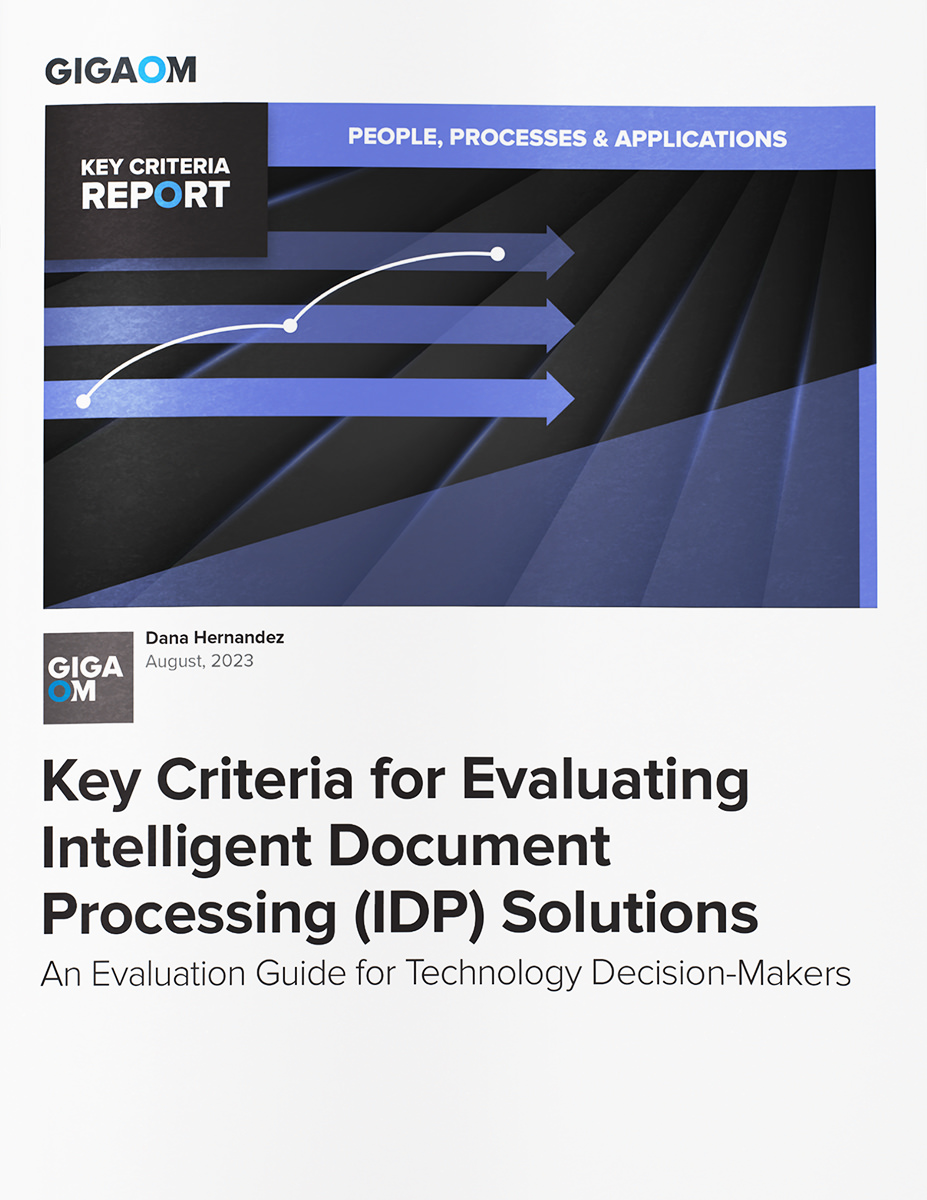Key Criteria for Evaluating Intelligent Document Processing (IDP) Solutions

This GigaOm Key Criteria report highlights the capabilities (table stakes, key criteria, and emerging technologies) and non-functional requirements (evaluation metrics) for selecting an effective IDP solution. The companion GigaOm Radar report identifies vendors and products that excel in those capabilities and metrics. Together, these reports provide an overview of the category and its underlying technology, identify leading IDP offerings, and help decision-makers evaluate these solutions so they can make a more informed investment decision.
Intelligent document processing (IDP) solutions enable the transformation of documents containing unstructured, semi-structured, and structured data into digital assets quickly and accurately. IDP solutions use artificial intelligence (AI), machine learning (ML), natural language processing (NLP), and deep learning to improve data extraction accuracy and enable faster processing.
Over the last decade or so, there’s been a growing need to increase the accuracy of optical character recognition (OCR). Several vendors experimented with a combination of Python code and OCR in what was termed “intelligent OCR.” While data extraction accuracy increased between 5 and 10%, the results still did not meet the requirements of IT, automation centers of excellence (CoE), and process leaders.
However, thanks to significant investments in AI, ML, NLP, and deep learning, IDP solutions are able to go beyond intelligent OCR and provide several tangible advantages:
- Even with relatively poor-quality documents and scanners, IDP solutions can deliver greater accuracy in data extraction than legacy OCR tools can.
- The availability of AI/ML/NLP capabilities in IDP ensures that the strike rate in processing data is significantly higher than with legacy OCR tools.
- IDP tools, in principle, are supposed to function with minimal training in terms of minor template changes, whereas with OCR, this type of flexibility doesn’t exist.
Decision-makers will want to determine whether an IDP solution is a refurbished intelligent OCR tool or a dedicated product built from the ground up to meet the requirements of complex use cases. IDP solutions should be adopted as part of a broader enterprise automation strategy that uses suitable software products to meet various task, process, and document automation requirements.
This is the second year that GigaOm has reported on the IDP space in the context of our Key Criteria and Radar reports. This report builds on our previous analysis and considers how the market has evolved over the last year.

